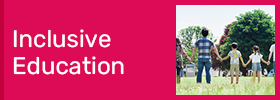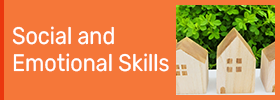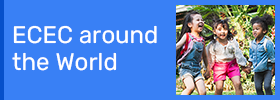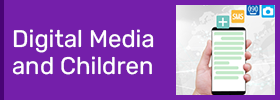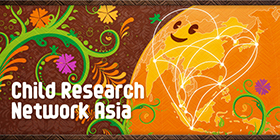| PHILIPPINE EDUCATIONAL SYSTEM: AN OVERVIEW The over-all framework of Philippine Education is articulated in the Philippine Constitution: Article II, Section 13 The state recognizes the vital role of the youth in nation-building and shall promote and protect their physical, moral, spiritual, intellectual and social well-being. It shall inculcate in the youth patriotism and nationalism and encourage their involvement in public and civil affairs. Section 17:20 The state shall give priority to education, science and technology, arts, culture and sports to foster patriotism and nationalism, accelerate social progress and promote total human liberation and development. This vision is then translated to a breakdown of the curriculum in the elementary, high school and non-formal education. Curriculum is a "set of learning content and experiences that are selected, organized and implemented by the school in pursuit of its institutional purpose." Curriculum is implemented through a mode of instruction. A school is given a body of content as mandated by the Department of Education and Culture and this is translated or implemented through a set of learning experiences associated with the content. Learning content deals with the topics, issues, subject, skills, habits, values, etc. which a person needs to acquire and develop to be able to function successfully in a society. On the other hand learning experience is how these topics, issues, subject, skills, habits, values, etc. are given a venue to be formed, acquired and internalized. Learning experience is the all- environment a child is subjected to. It is highly relevant that we understand the over-all purpose of the Philippine educational system. Aside from the curriculum, learning situations are created towards the contribution for the achievement of the vision. "The major function of formal education or schooling on the elementary and secondary levels is primarily to transmit organized knowledge in distilled form to a new generation of young learners. Schooling can be considered as a "short cut to life experience." (Palma. 1992). |
|
| PRIMARY SCHOOL Elementary education consists of six years- a four primary education and a two-year intermediate program. Normally, children are admitted to the first grade level at the age of seven. Pre-school education is optional though most schools require children to pass through kindergarten. Some private school reaches until the Grade VII. With the Elementary Education Act of 1953, every parent is compelled to enroll a child of school age in a public or private school. "Elementary education aims at enabling every Filipino child to acquire the basic skill, knowledge, habits, attitudes, appreciation, and ideas to make him an efficient and intelligent citizen in a democratic society." |
|
|||||||||||||||||||||||||||||||||||||||||||||||||||||||||||||||||||||||||||||||||||
| SECONDARY SCHOOL: The New Secondary Education Curriculum (NSEC) of the Secondary Education Development Program (SEDP) is a cognitive-affective-manipulative based. Focus is on substantive and process content, values development, productivity and technology. Secondary School is divided into four years with eight major subject areas. The school year consist of not less than forty-two calendar weeks with a minimum of two hundred class days inclusive of examination days. |
|
| Non-Formal education The Education Act of 1982 created the Non Formal Education Accreditation and Equivalency. It serves as an alternative means of certification of learning to drop outs. It recognizes education as a social function and seeks to integrate core values in its curriculum. NFE is considered as any organizes school based education activity undertaken by DECS and other agencies aimed at attaining specific learning objectives for particular clientele specially illiterates and the out-of-school youth and adults, distinct from and outside the regular offerings of the formal school system. |
||||||||||||
|
||||||||||||
| LEARNING SITUATIONS: THE TEACHER'S POINT OF VIEW Generally, teachers play a greater role as stimulants and provider of learning situations of children. From the time a child goes to school the level of interaction between the child and teacher is greater than the child's exposure to the parents. Therefore the teacher plays a salient and sensitive role in child development. The teacher performs two very important functions in the education process: character formation and instruction. The teacher acts as a model, counselor, guide, disciplinarian, secondary parental role a the same time "teaches". Based on a mentioned subject areas and time allotment of each level, teachers create learning content and situations. Each subject matter is taken apart and fundamental structure of the subject rather than fragments of information is encouraged to be taught and translated to a learning situations. In each learning situation, the subject areas should be able to include the following sub elements: Facts, Information. Topics, Themes, Skills, Habits, Competencies, Values, Ideas, Concepts, Generalizations, Theories, Principles, Axioms, Laws. Teaching and learning are parallel. Teaching is the responsibility of a professional trained for the job. "It involves the intelligent arrangement of the environment and resources that will involve the right kind of response from the learners. While learning is done by the learners by using optimally the learning resources and undergoing planned learning experiences. Thus, teachers provide the stimuli and the learners the response. |
| REALITIES Former DECS Secretary, Bro. Andrew Gonzales in his report "Philippine Basic Education 1999-2004: Analysis, Recommendations, and Plans" pointed out problems of the educational system. A number of the problems are brought about by shortcomings in providing proper and effective learning situations for children. Learning effective is measured using national measures of achievement. The National Elementary Achievement Test (NEAT) is the testing used for grade VI students while the National Secondary Achievement Test (NSAT) is for Grade 10 levels. Results of the scores were analyzed in 1997-1998 and indicated that Filipinos are more than two and a half years behind his Grade 10 peers in developed countries. Filipino children were found (using the International Mathematics and Science study test results) to be consistently among the bottom three in mathematics especially science. Filipino children, even if they finish Grade VI are hardly able to do basic interpersonal communication. This is called semilingualism wherein there is no mastery of either the local or foreign language. While the basic literacy and numeracy skills are learned, there is a wide problem in terms of raising the level of communication and analytical competencies. |
Problems and Learning Situation Issues
|
| To be continued |



